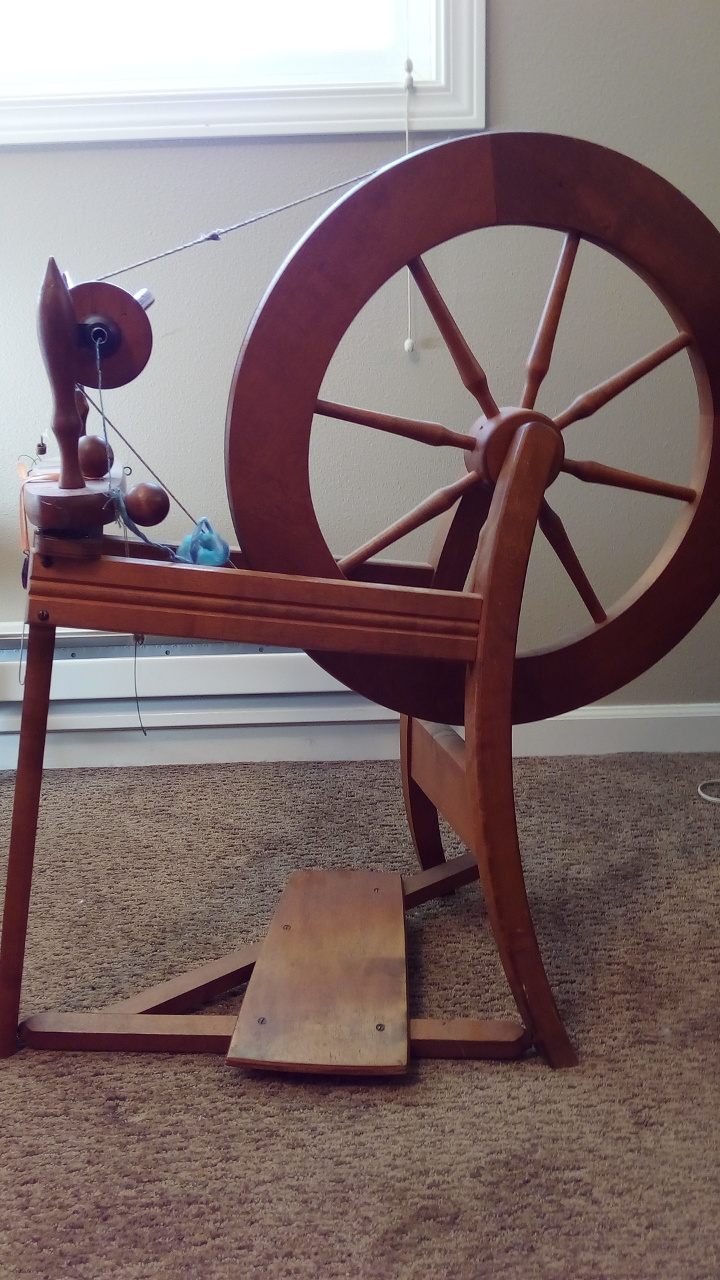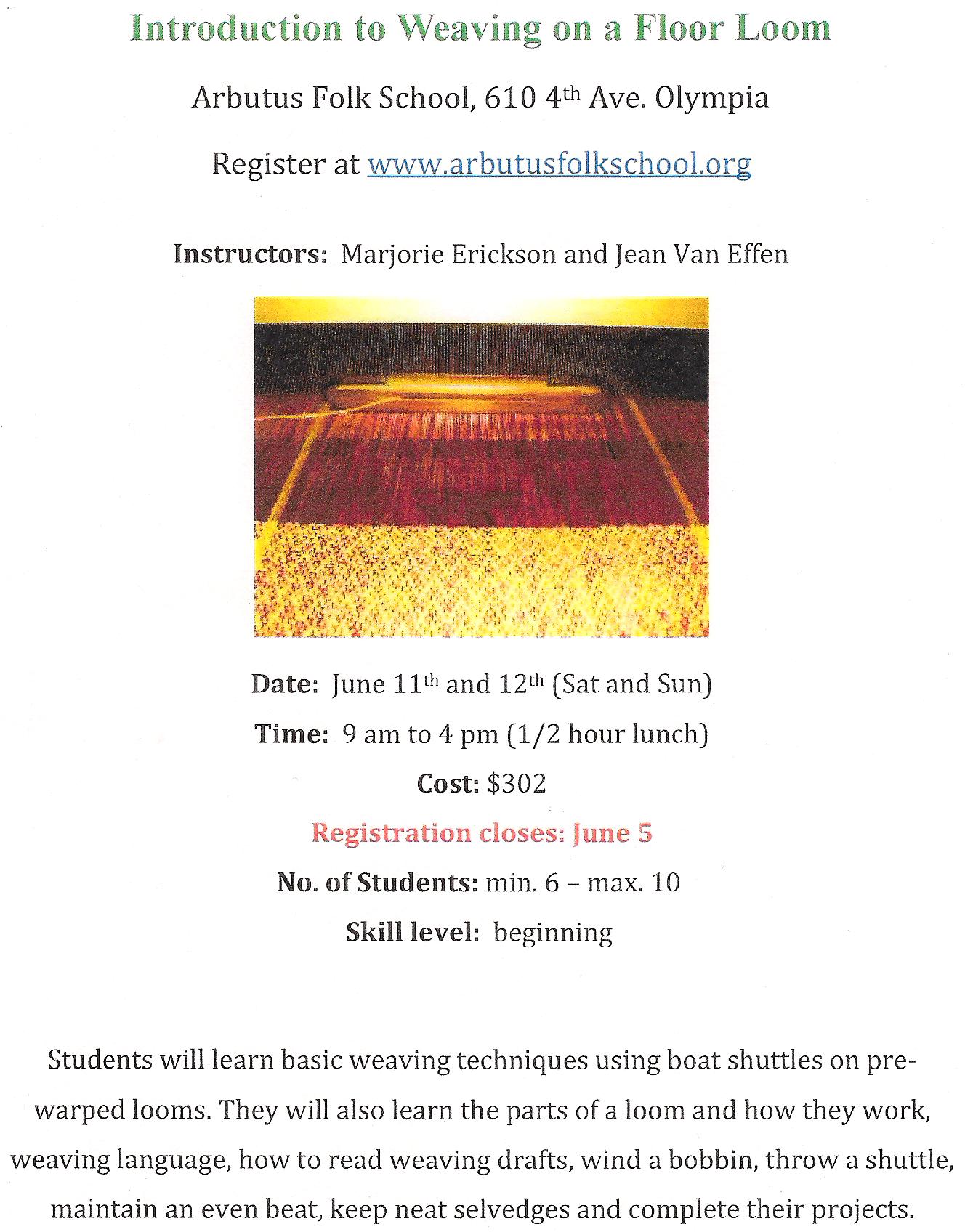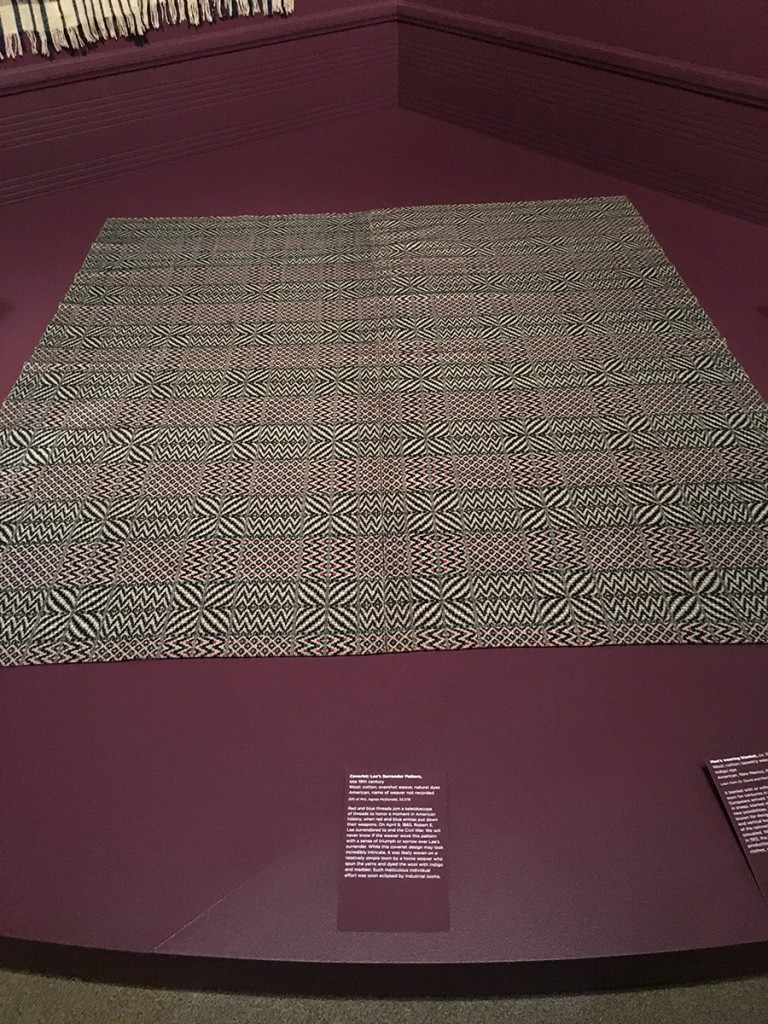“The purpose of the Olympia Weavers’ Guild shall be to provide a forum where active weavers may share information, knowledge and techniques, and provide each other with guidance, encouragement, and inspiration.“ This statement from the By-Laws of the guild and seeing the idea in one of the magazines we receive in the library launched the idea of the Tip Jar.
Thanks for sharing your favorite tips you learned this year during Showcase, the programs, study groups and breaks. In addition there were many ideas that came in to improve the guild during the business meeting which, this summer, will be captured and organized with the rest of the ideas to improve the guild that came the past two months.
The blog Joy of Weaving has “The Best Tension Device”, http://joyofweaving.com/articles/best-tension-device-ever to provide extra tension for a plain beam using 1” dowels and some hair ties.
For how to use it see: http://joyofweaving.com/articles/how-to-use-a-tension-device
Harrisville version: http://harrisville.com/weave/weaving-accessories/tensioning-device-floor-loom/ They describe it as especially good for those who warp alone.
There was a question on Boundweave which is way above my understanding especially when there were tips to maintain sanity but here are some of the basics I found in “The Weaving Book – Patterns and Ideas” by Helene Bress
- Bound weave is a loom-controlled, weft-faced weave. It is a trebling system and not a threading system. It can be done in most threading systems. http://www.weavingtoday.com/weaving-projects-patterns/the-beauty-of-boundweave
- The weft goes from selvage to selvage. The warp sett must be wide enough to allow the weft yarn to pack down and cover the warp. Usually, the warp is a hard, strong, smooth yarn. The weft is a soft, loosely spun yarn. Weft is place into the shed at an angle, and it should beat down to cover the warp. If it is not covering well then bubble the weft or change either the sett or the weft yarns. A strong, heavy stiff fabric results and works well for hangings, pillows, purses, runners, rugs and upholstery. https://www.cs.arizona.edu/patterns/weaving/periodicals/wj_77_04.pdf
- It can be done on Huck, Twills, Overshot, Plain, Monk’s Belt, Rep and Indian Saddle Blanket Weave.
- Krokbragd is a charming Boundweave variation. The word is Norwegian, and literally means crooked lines or crooked path. Generally it is threaded to a 3-harness Point Twill and treadles as a rotation weave.http://tangleweave.blogspot.com/2009/11/making-of-krokbragd-tote.html
- Bound weave is not known for its lovely selvages. A floating selvage will serve you well. http://www.weavingtoday.com/blogs/ask-madelyn/working-with-floating-selvedges
Enjoy the summer and take advantage of opportunities to fulfill the 2nd purpose of the Guild:
“Guild members will be encouraged to share their interests in weaving with members of the community by promoting community education and participating in special events and services.”







